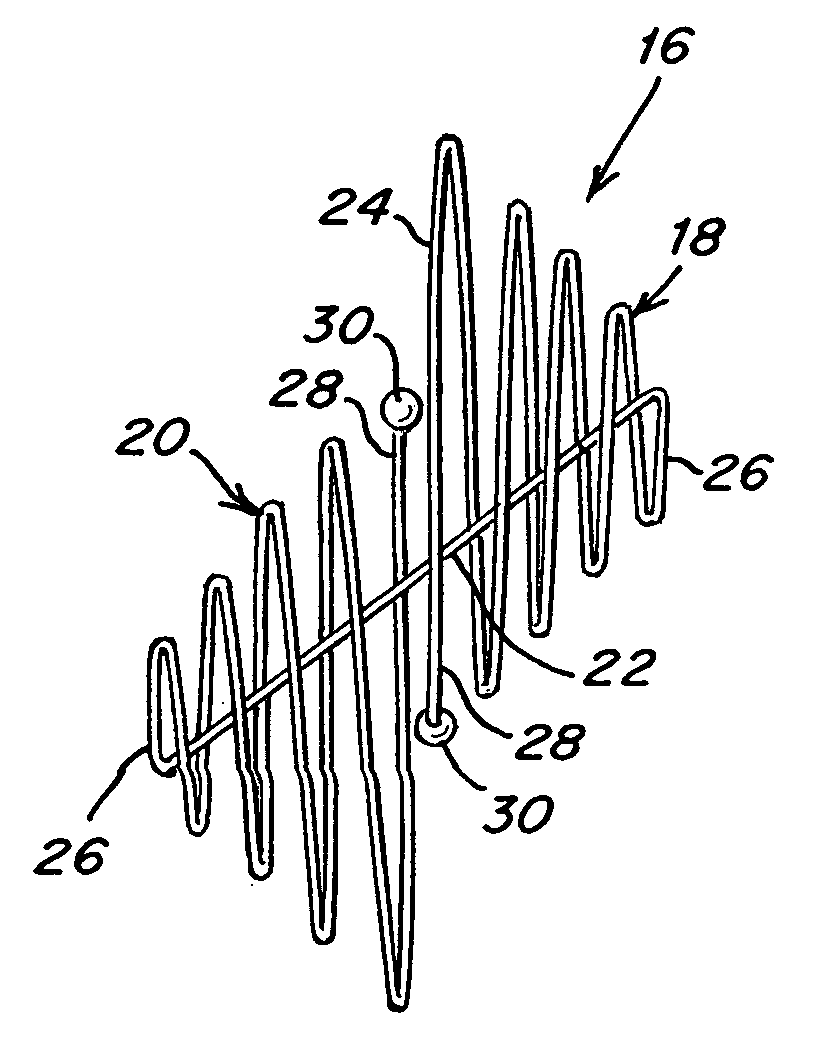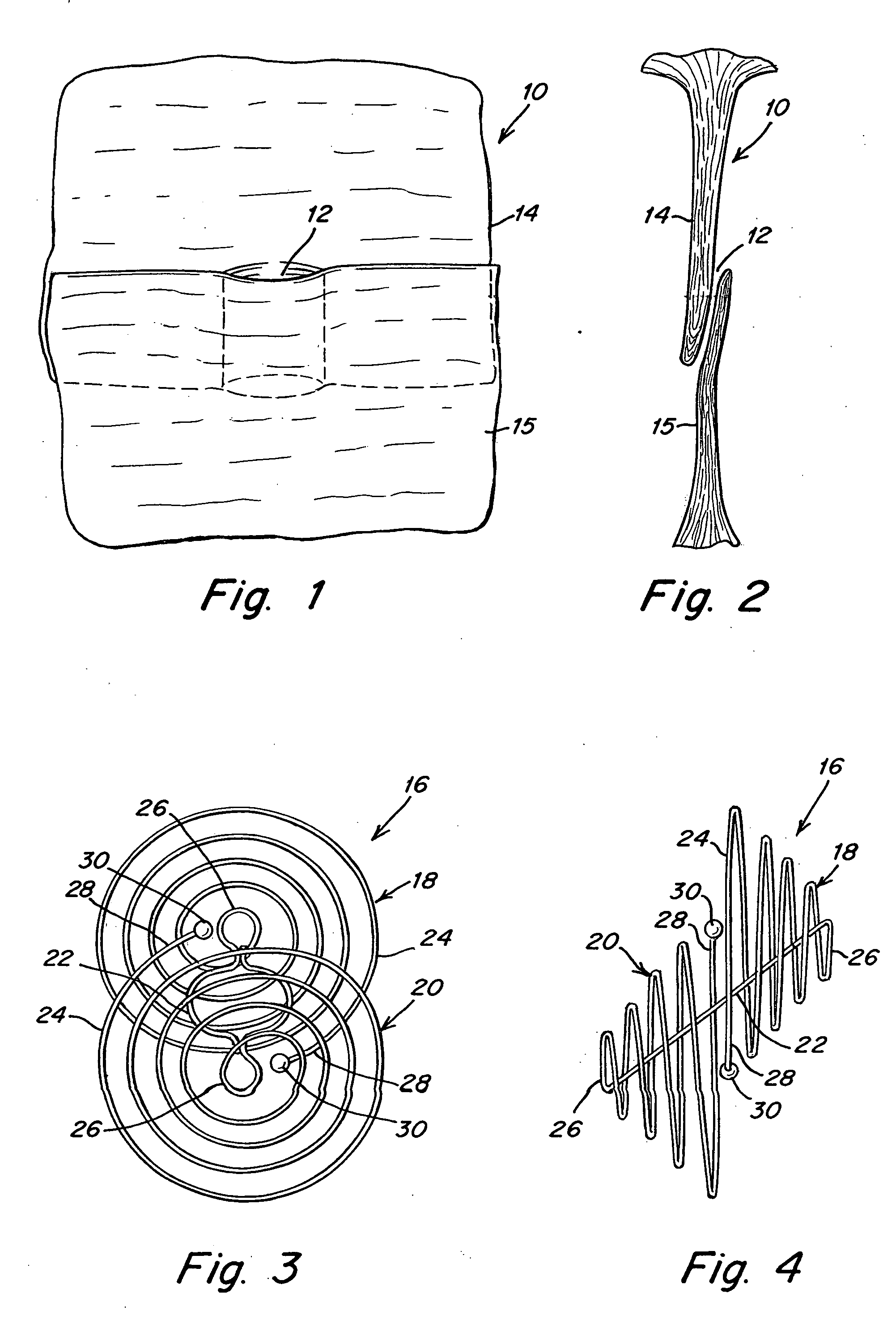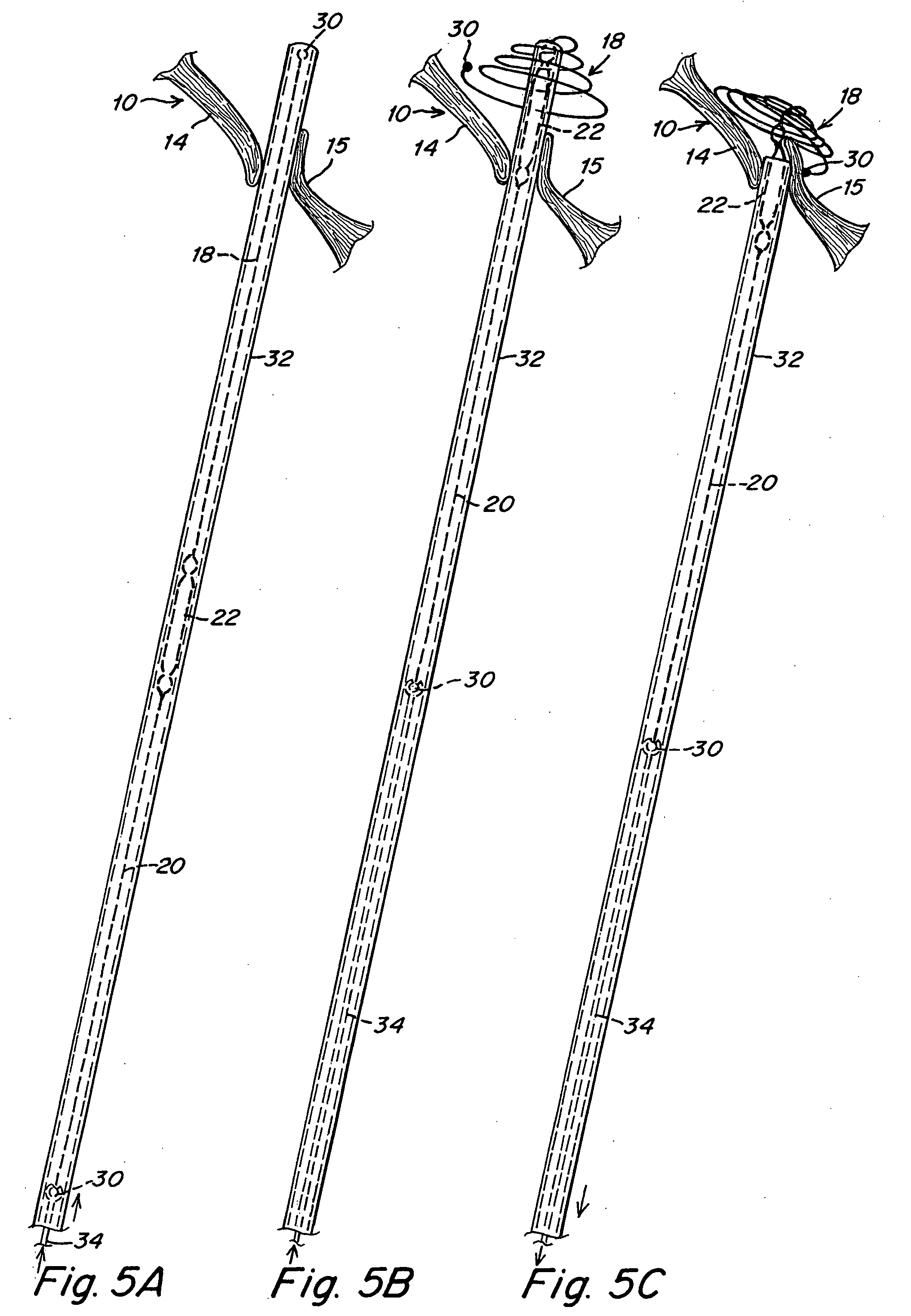Double spiral patent foramen ovale closure clamp
a patent foramen and ovale technology, applied in the field of double spiral patent foramen ovale closure clamps, can solve the problems of inconvenient use, increased risk for future pfo and paradoxical embolism patients, and the like, which are designed for umbrella devices and the like, which are not optimally suited for use as pfo closure devices
- Summary
- Abstract
- Description
- Claims
- Application Information
AI Technical Summary
Benefits of technology
Problems solved by technology
Method used
Image
Examples
Embodiment Construction
[0041] With reference to FIGS. 1 and 2, the atrial septum 10 divides the left atrium and right atrium of the heart. The patent foramen ovale (PFO) channel 12 extends between the left and right atria and is closed by a flap 14 and 15. Due to the overlap of the septum primum over the septum secundum, the PFO channel or tunnel extends substantially parallel to the surface of the atrial septum. The anatomical structure presents a problem when attempts are made to use conventional septal occluders with opposed, spaced, parallel sections (possibly spiral) are joined by a straight wire or bridge which is substantially perpendicular to the planes of engagement between the sections and the atrial septum. The straight wire or bridge deforms the channel 12 and often prevents proper closure even when the septum primum and the septum secundum are biased toward one another by the spiral sections of the occluder.
[0042] Referring to FIGS. 3-7, the double spiral PFO closure clamp of the present inv...
PUM
 Login to View More
Login to View More Abstract
Description
Claims
Application Information
 Login to View More
Login to View More - R&D
- Intellectual Property
- Life Sciences
- Materials
- Tech Scout
- Unparalleled Data Quality
- Higher Quality Content
- 60% Fewer Hallucinations
Browse by: Latest US Patents, China's latest patents, Technical Efficacy Thesaurus, Application Domain, Technology Topic, Popular Technical Reports.
© 2025 PatSnap. All rights reserved.Legal|Privacy policy|Modern Slavery Act Transparency Statement|Sitemap|About US| Contact US: help@patsnap.com



